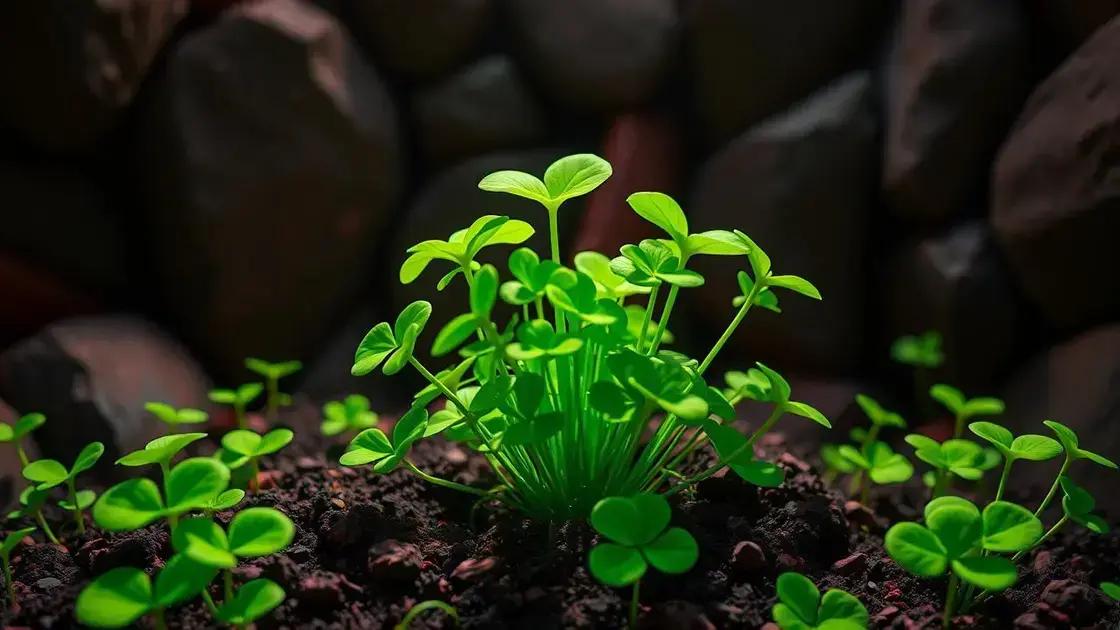How to Care for Shamrock Plant Indoors: 5 Essential Tips for Success
How to care for shamrock plant indoors involves several essential tips that can transform your indoor gardening experience. Picture lush greenery complementing your living space, attracting attention and admiration. Exploring watering routines, light requirements, and pest prevention sets the stage for understanding how to achieve this beautiful indoor oasis. Dive deeper to learn the crucial steps for successful shamrock plant care!
Table of Contents
ToggleUnderstanding shamrock plant care basics
Understanding shamrock plant care basics is essential for thriving indoor gardening. Knowing how to care for your shamrock plant indoors ensures its vibrant green leaves and unique clover-like shape flourish in your home. This guide will provide you with the fundamental knowledge necessary for maintaining your plant’s health.
Watering needs for shamrock plants
- Water thoroughly when the top inch of soil feels dry.
- Reduce watering frequency during the dormant winter months.
- Avoid overwatering to prevent root rot.
Light requirements
Shamrock plants thrive in bright, indirect sunlight. Direct sunlight can scorch their leaves, so placing them near a window with filtered light is ideal. If natural light is limited, consider using grow lights for adequate illumination.
Soil requirements
Choosing the right soil is vital for your shamrock plant’s health. Here’s a quick guide to the ideal soil mix for shamrock plants:
| Soil Type | Description |
|---|---|
| Potting mix | Light and well-draining for healthy root growth. |
| Pearlite or sand | Mix in for better drainage properties. |
| Organic matter | Adding compost can improve soil nutrients. |
Fertilizing tips
To keep your shamrock plant thriving, fertilize it during the growing season. Here’s how:
- Use a balanced, water-soluble fertilizer every 4-6 weeks.
- Reduce or stop fertilizing during the winter dormancy.
By exploring indoor gardening techniques, you can apply best practices to ensure the longevity of your shamrock plant.
Common pests and diseases
While shamrock plants are generally hardy, they can be susceptible to specific pests and diseases. Recognizing problems early can save your plant:
- Aphids: Look for signs of sticky leaves.
- Mealybugs: Examine the foliage for white cotton-like substances.
- Fungal issues: Ensure good air circulation and avoid excess moisture.
Understanding the basics of how to care for shamrock plants indoors helps create a thriving environment for your green companion!
Optimal light and watering techniques for shamrocks

Optimal light and watering techniques for shamrocks are crucial for maintaining a healthy indoor environment for your plant. Understanding how to meet your shamrock’s specific needs ensures vibrant growth and well-being.
Light requirements for shamrock plants
Shamrock plants prefer bright, indirect sunlight. Too much direct light can damage the delicate leaves. Consider these tips:
- Place near east or north-facing windows for optimal light.
- Utilize sheer curtains to diffuse harsh sunlight.
- Rotate the plant occasionally for even light distribution.
Signs of inadequate light
It’s essential to monitor your plant for signs indicating it may not be receiving the appropriate light:
- Leggy growth: Stems stretch toward the light source.
- Pale leaves: Significant green color loss can indicate insufficient light.
- Slow growth or dormancy: Reduced growth may result from inadequate light.
Watering techniques
Regularly assessing the moisture level in your shamrock’s soil is key to proper watering. Follow these guidelines:
- Check the top inch of soil: Water if it feels dry.
- Ensure drainage: Use pots with drainage holes to prevent root rot.
- Adapt watering schedule: Less frequent watering is necessary in winter.
Water quality considerations
Using good quality water is equally important. Here are some options:
- Tap water: Let it sit for 24 hours to dissipate chlorine.
- Rainwater: A natural choice, rich in nutrients.
- Filtered water: Beneficial if your tap water contains chemicals.
For more detailed strategies, consider exploring indoor gardening techniques that can enhance your plant care practices.
Evaluating your plants’ health regularly
Regular examination of your shamrock plant can prevent issues before they arise:
- Monitor leaf conditions: Look for discoloration or spots.
- Check soil moisture: Avoid waterlogged conditions.
- Adjust light as necessary: Ensure consistent care.
How to prevent common shamrock plant problems
How to prevent common shamrock plant problems is crucial for maintaining the beauty and vitality of your indoor garden. By recognizing potential issues early, you can ensure your shamrock thrives.
Identifying pests and diseases
Pests can pose a significant threat to your shamrock plant. Here are some common pests to watch out for:
- Aphids: Small, green insects that can cluster on new growth.
- Mealybugs: White, cottony masses found in leaf axils.
- Spider mites: Tiny pests causing pale spots on leaves.
Signs of common issues
Being proactive means checking your shamrock regularly for signs of distress:
- Yellowing leaves: Can indicate overwatering or nutrient deficiency.
- Wilting: May signal underwatering or root problems.
- Leaf drop: Often due to stress from temperature changes or pests.
Preventative measures
To keep your shamrock healthy, follow these preventative measures:
- Maintain proper watering levels: Ensure the soil dries out slightly between waterings.
- Regularly inspect leaves: Early detection of pests or damages can facilitate treatment.
- Rotate pots: Helps in even growth and light distribution.
Creating the right environment
Your shamrock plant thrives best in specific conditions. Adapting its environment helps prevent issues:
- Maintain humidity: Consider using a humidity tray or misting.
- Provide bright, indirect light: Too much direct sunlight can cause leaf burn.
- Keep temperatures stable: Ideally between 60-75°F (15-24°C).
In addition, for detailed strategies on maintaining plant health, consider exploring indoor gardening techniques that cover a broader range of care insights.
Using natural remedies
If issues arise, natural solutions can help restore health:
- Neem oil: Effective for treating pests without harsh chemicals.
- Soap spray: Mild insecticidal soap can help control infestations.
- Diatomaceous earth: A natural pest deterrent that is safe for plants.
In conclusion
Maintaining a thriving shamrock plant indoors involves understanding its fundamental care requirements, such as optimal light and watering techniques, as well as preventing common problems. By regularly assessing your plant’s needs and adapting your growing conditions, you can enjoy the vibrant beauty of your shamrock. To further enhance your indoor gardening experience, consider exploring additional resources and tips on enhancing your indoor garden.

